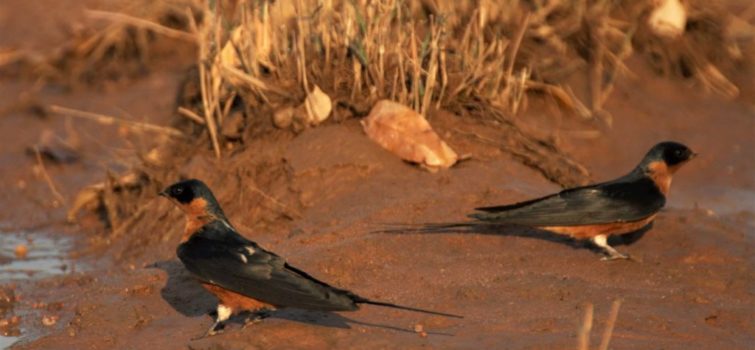‘A O Bone Peolwane?’ – Did You See The Swallow?
Red-breasted Swallow (English) Peolwane (Northern Sotho) – Hirundo semirufa
Early on Monday morning, we headed out on the game drive just before 6am. It was a cool morning, typical of spring but the sun was starting to rise above the hills that surround the Makweti Gorge. We had discussed birding the night before around the table and were keen to see what morning birding activity was on offer.
We approached Pienaar’s Crossing and were just about to cross the now quite shallow water crossing when we stopped to watch some African hoopoes across the bank. Whilst sitting in the morning light and fresh air, we were instantly rewarded with a spectacular sighting of a pair of red-breasted swallows.
About three weeks back, I had returned from a morning drive and mentioned to Jessica that we had seen the first pair of red-breasted swallows to return for their Summer breeding on the reserve, and here before us was the very same pair. They were swooping in low over the pools of water in the crossing and were dancing in tandem with a pair of lesser-striped swallows. After a while, the pair of red-breasted swallows settled on the mud patch just across from us and started to prepare to collect mud for their nest-building. The pair diligently went about collecting small balls of mud in their beaks before flying off, giving way for the other swallows to follow suit. They returned about 15-minutes later and repeated the activity for their house-building.
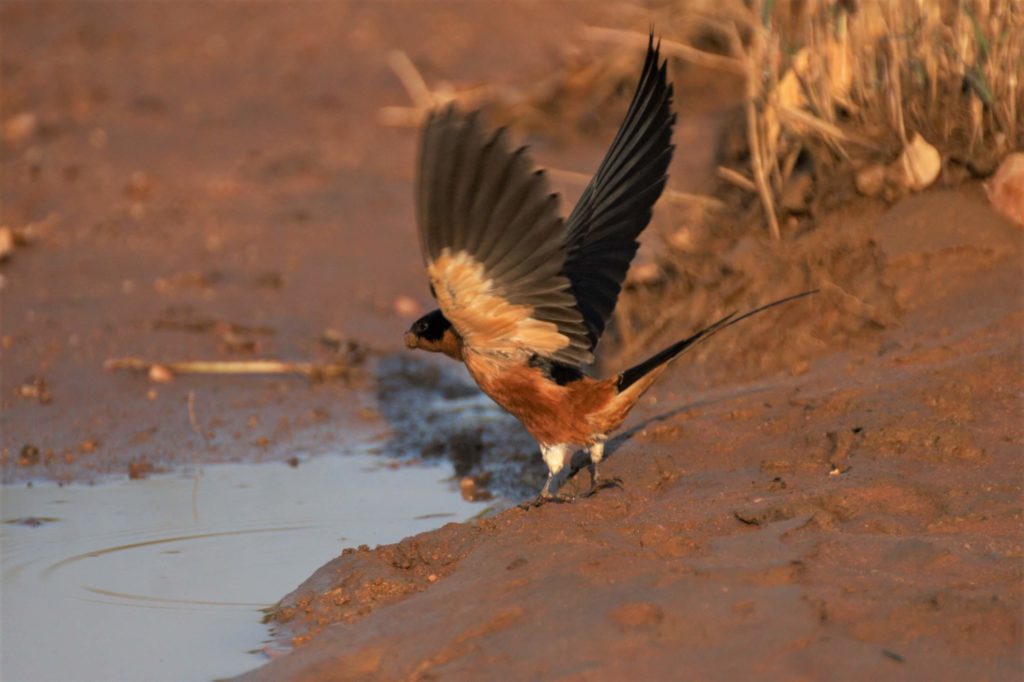
The North Sotho phrase “A o bone Peolwane?” or “Did you see the Swallow?” was so apt in this scenario and summed up the moment perfectly. Did you see the swallow? Had you noticed the change in the seasons? Spring is coming, have you looked around and noticed the world is spinning around us? Or are we still too busy worrying about ourselves to be cognisant of where we are? Spring has indeed arrived, and although we are only in the early phases of change, it’s happening right here before us.
The red-breasted swallow is quite unmistakable with its rich rufous colour on the throat, chest and rump. A fairly large swallow with blue-black shoulders, back and tail and typical swallow flight habits. This widespread species is found from Angola, Zambia and DRC south to NE Botswana, Namibia and into South Africa as far south as the Orange River. Once regarded as extinct from the Free State, it is not a common sight. It has been actively breeding in this province for the past 40 years. Records of its distribution south of the Free State are absent with few isolated records in the Eastern Cape. This species is regarded as an intra-African breeding migrant, where it breeds in the southern regions returning to the central-African regions over winter. They usually arrive in Zimbabwe mid-July, Botswana late-July and NE South Africa early-August. The breeding season stretches to March or early April, when the pairs start leaving South Africa again to head north. Often seen in pairs or in singles, they perch on high twigs near their nests, basking in the early morning sun. The adult pairs will roost in the nests at night, even before egg-laying has commenced, so nest-building occurs early on arrival in their preferred areas.
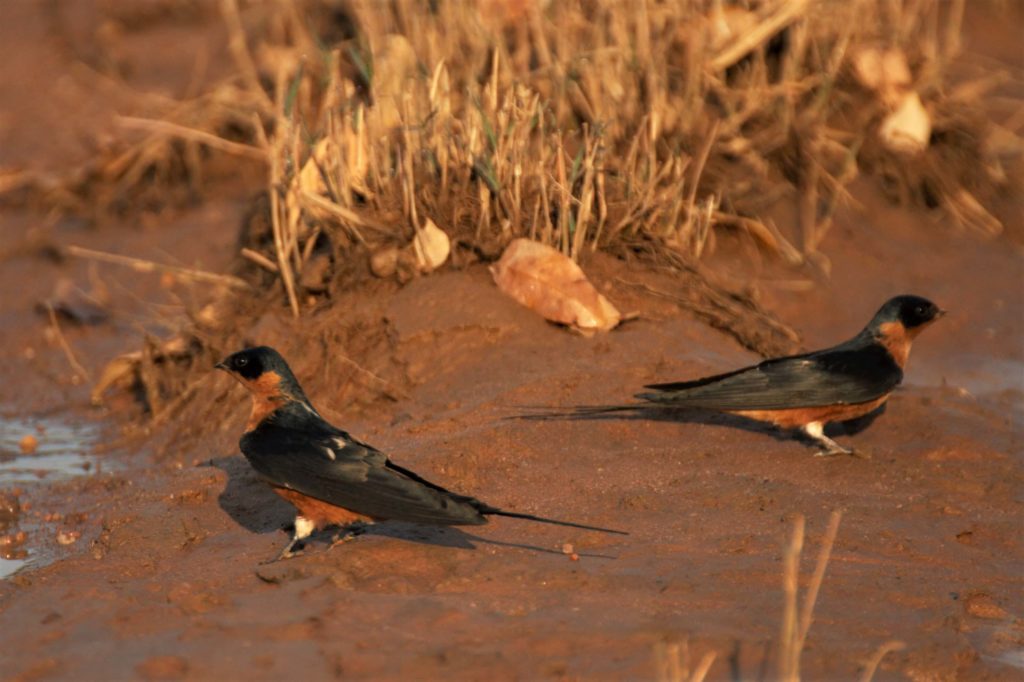
The last three years, I have watched a pair return to the same nest site on the reserve. This pair nests in a culvert under the road heading towards to the central areas of the reserve. To date, they have always been the first pair I have seen to return, bar this year with the arrival of the pair we witnessed on Monday morning. They mostly feed on aerial arthropods especially during termite emergences following rain. The monogamous pair’s bond lasts several years with both male and female involved in nest-building. The nest is a typical mud gourd made from mud pellets as we witnessed being collected. The nest has a long entrance tunnel with the cup being lined with feathers. Although the pair we have witnessed nesting in the past was associated with a man-made structure, natural nest sites include the roof of an aardvark’s tunnel, hollow termite mounds or the underside of fallen trees. One to six eggs are laid, usually between September and April and in two – five clutches. Incubation usually starts after the last clutch. The eggs all hatch within 24-hours of each other. The chicks are born altricial; blind and pink. The usually fledge after 25 days where they start to leave the nest for the first time.
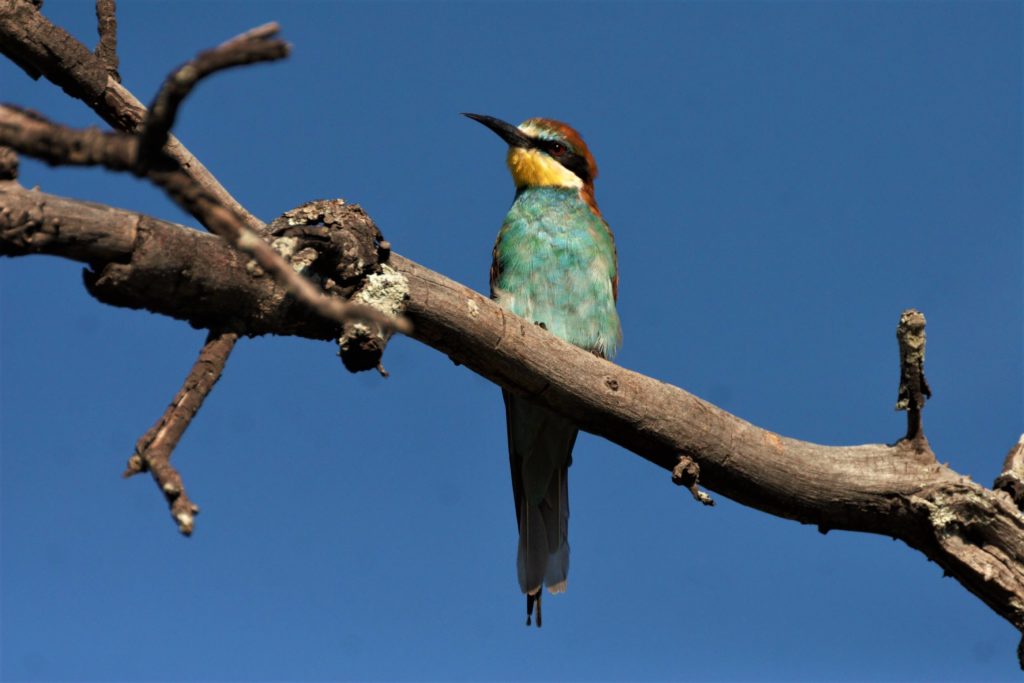
Although a common summer visitor, this swallow brings about the first signs of change for Spring. Every year we have eagerly awaited all our summer migrants to return and relish with every new day bringing someone new back home to enjoy the green summers with us on the reserve. It’s just the beginning, and over the next two months we will see our skies and canopies filled with returning friends. The European bee-eater will come in great numbers, followed shortly by the woodland kingfishers, whose characteristic calls echo through the valleys from dawn till dusk. We look forward to welcoming old friends back.
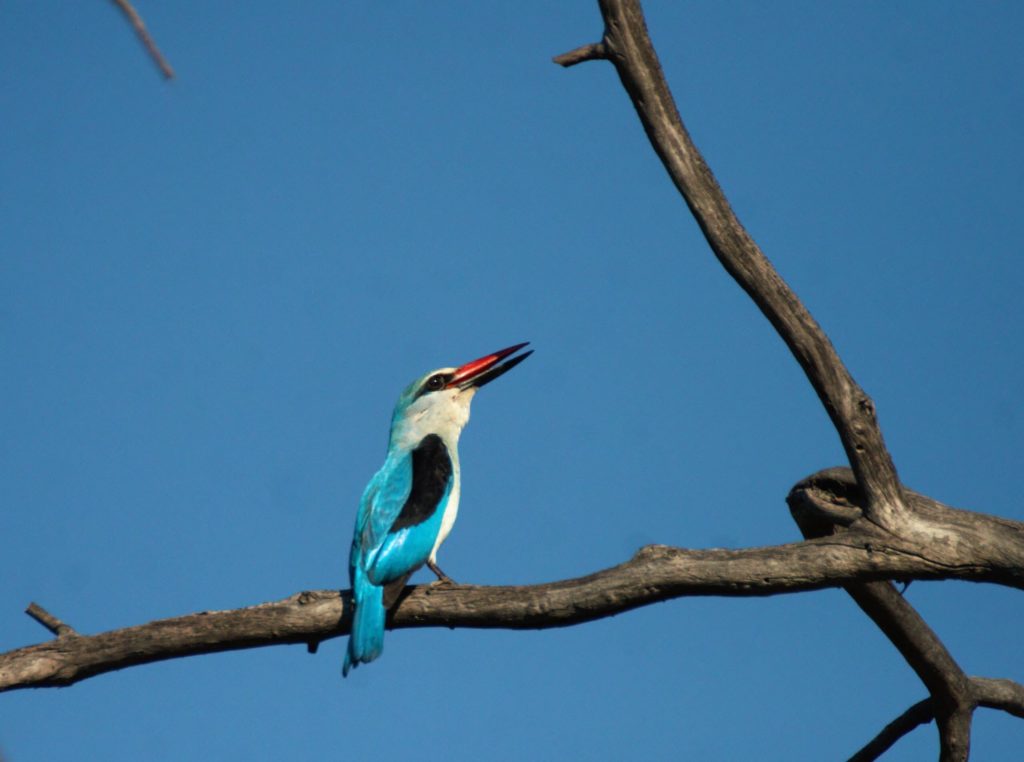
So, when next you feel a little caught up in your own moment, stop and ask yourself, “Did I see the swallow?”
Text and photographs: Neil Davison
References:
- Personal observations by the author on Welgevonden Game Reserve and other Reserves in Southern Africa
- Roberts Birds of Southern Africa 7th Edition; PAR Hockey, WRJ Dean & PG Ryan, John Voelcker Bird Book Fund, Jacana Publishers, 2005

